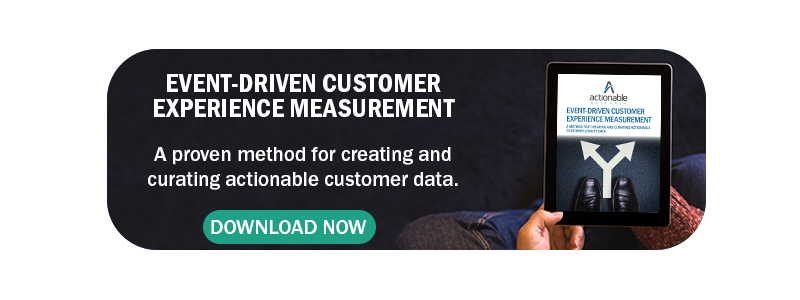The world has gone digital. Period. Those of us with desktop printers and file cabinets can fight it all we want, but the fact is, paper has long since become a medium of the past. Local and online access to every document and file we have ever created, or anyone has ever shared with us, is literally at our fingertips. 24/7. And within that digital file cabinet, certain documents are and should remain static. Snapshots of a given point in time. Legal and financial documents come to mind first. But take it a step further. What about documents that could live, breathe, give rise to interactive conversation and collaboration? Documents that could be actively useful, applicable, and as relevant today as the day they were created.
Marketing research results are the perfect example of documents which can benefit immensely from interactivity. The fact is, the infrastructure exists to fully support digital data access, and our world has come to expect digital interaction in every aspect of our lives. This intersection of technology and culture means that the time is ripe for interactive reporting with online dashboards.
Static Reporting is a Thing of the Past
Last week we discussed the drawbacks of using static PowerPoint decks to share marketing research insights. While long the standard for delivering research results, these 100-plus-slide decks are often reviewed in their entirety only once at report delivery. Portions of the deck are then shared internally with appropriate audience members, then filed away to wither and die.
Dashboarding is NOT the Way of the Future. It’s Here Today!
Now let’s take that same slide deck, and instead of running out every chart and graph, segmented and sorted as the researcher believes is relevant, let’s build a framework where the most compelling results are presented alongside others, speaking to the goals and objectives of our study. Key metrics are compiled and presented in a visually appealing way that promotes logical pathways to the next step in the overall narrative. Let’s include the ability to pull any segment, graphically review one question against another or compare to another segment. Let’s enable dynamic linking from one result to another for navigational ease.
While we’re at it, let’s include a simple yet complete cross-table tool which will allow for ‘self-service’ discovery of any results in the study. To round things out, another tool which will allow for the review and multi-layer filtering of all open text feedback. And now that we’re finished building, let’s launch the report for online consumption, giving appropriate password-protected access, filtering, sharing, and custom view-building rights at every desired level to anyone in our organization -multiple people who are looking for different levels of detail. Finally, let’s allow the interactive, user-led journey of the narrative naturally lead to collaboration, discussion, decision and implementation for optimum results and ROI.
This is the dream dashboard. 10-15 powerful views which will be all things to all users: key findings and summary data for C-Suite execs, expanded narrative and commentary for project managers, filtering and comparing for team members, ad hoc data for analysts and researchers. All designed to create an efficient dialog between the user and the data, an interactive tool that enables decision-making supported by results.
The Big 5 Of Dashboard Reporting: Ensuring No One Falls Asleep at the Wheel
As some will note, dashboards for market research results are not new. We were developing a dashboard research product called CustomerMeter in 1999. The market, however, was not ready for such an approach at that time. It was still too difficult to reference content online, and the web lacked the collaboration tools that are readily available for today.
Even with the tools now available, it is easy to create online dashboards that are simply re-creations of today’s locked-up PowerPoints. Worse, they can be a data dump, with no narrative or story, impenetrable for the individuals who want easy access to the big picture.
As a marketing researcher, keep in mind that an effective, interactive dashboard will always be created to answer the questions: ‘Who are we communicating with?’ and ‘What information do they need to make decisions?’ And for the user, the experience must be designed to answer the questions: ‘What do I see?’ and ‘What do I do next?’
Every dashboard for the successful reporting of marketing research insights requires these 5 components:
- The Big Picture Narrative: A living portrait of the performance measures that can be directly influenced by the decision-maker
- The Executive Summary: The net of the analysis that lead to the big picture narrative
- The Rundown: The answers to the questions that drove the executive summary, including the influencing factors that have an effect on decision making
- The Ad Hoc: The ability to do the ‘what-ifs’ that aren’t included in the rundown
- The Other Words: The ability to sort, filter, and review open text feedback
These, of course, are not all of the options that are available for dashboarding results, nor is it meant to be an exhaustive look into the benefits of this type of reporting. What this is, however, is a recipe to ensure the research insights into which you have invested significant thinking time, collaborative work time, and budget dollars live long healthy lives and make a meaningful impact on your company.
Actionable Reporting
Actionable Research has proudly introduced Everstream Reporter, an interactive results dashboard that will change how you look at marketing research results forever. Continue to read this quarter’s blog series on the advantages of dashboarding, or contact us today for a live demonstration of dashboarding in action.


